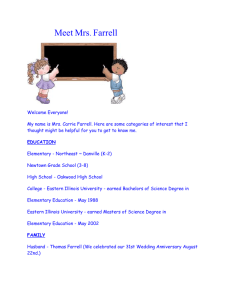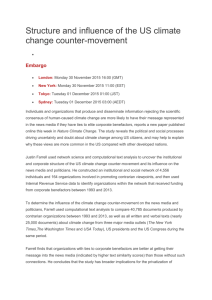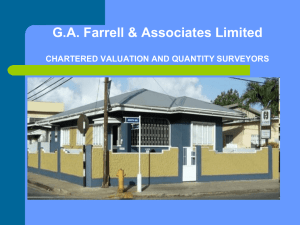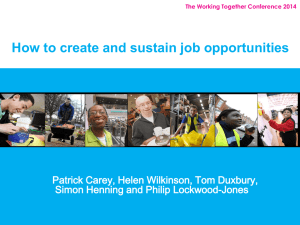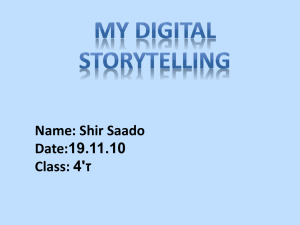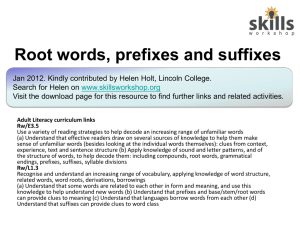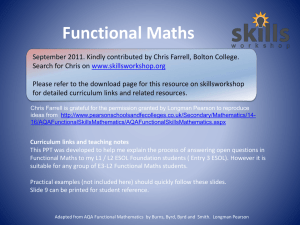critical review pg day2012
advertisement
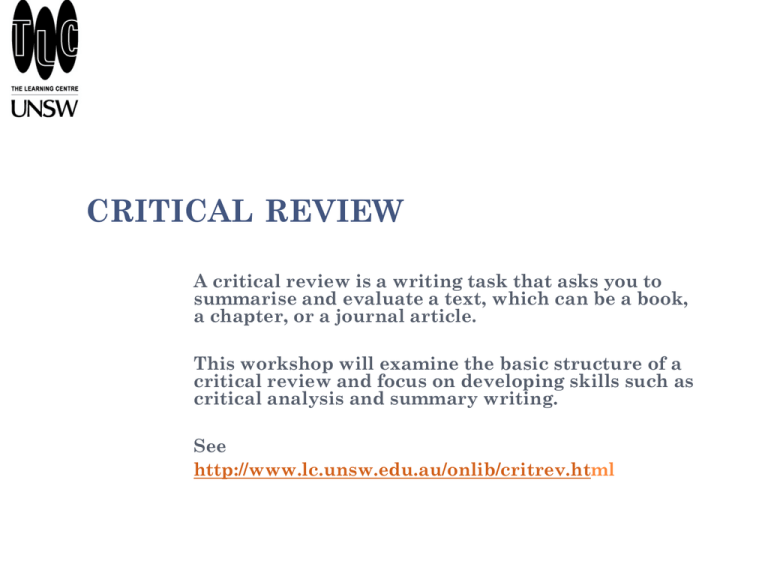
CRITICAL REVIEW A critical review is a writing task that asks you to summarise and evaluate a text, which can be a book, a chapter, or a journal article. This workshop will examine the basic structure of a critical review and focus on developing skills such as critical analysis and summary writing. See http://www.lc.unsw.edu.au/onlib/critrev.html WHAT IS A CRITICAL REVIEW? Essentially a critical review consists of: Helen Farrell, The Learning Centre 2012 A summary of a few key points of a text/s (book, chapter, journal article, website, etc) + Considered comment related to the summary It is an analysis of available information about a particular topic 2 STRUCTURE OF TODAY’S SESSION: Expectations re academic literacy Review of reading techniques Review of summarising techniques The art of Helen Farrell, The Learning Centre 2012 Critiquing Critical reviewing Critical analysing Writing a conceptual paper Evaluating 3 Creating Bloom’s Cognitive Taxonomy Evaluating •“Knowing the facts” is at the base of the pyramid Applying Understanding Helen Farrell, The Learning Centre 2012 Analysing •Each step depends on the prior step • Students are expected to be able to move through all levels to create new knowledge (especially post grad students) Remembering Anderson & Krathwohl (2001) 4 GETTING STARTED: CRITICAL READING Procedure for review: Helen Farrell, The Learning Centre 2012 1. Look at the big picture: that is, get an overview Titles Chapter headings/ journal headings Reference list Preface /Abstract Diagrams/ Tables/ figures Publisher How does this article ‘fit’ with the topics of your course? This is important to form first impressions and is valuable for writing your Introduction 5 CRITICAL READING CONT Helen Farrell, The Learning Centre 2012 2. Read the text thoroughly and ask yourself: - How has this text enhanced your knowledge of your topic? - What questions do you still have? - How does this text ‘fit’ with your coursework? - What new ‘vistas’ have opened up? 6 CRITICAL READING CONT Helen Farrell, The Learning Centre 2012 3. Select concepts you are going to comment on: Are they key points? Are you still on track with your assignment guidelines?? 4. Now it is time to plan: Organisation of concepts 7 R RULES FOR SUMMARISING: Focus on relevant aspects of the source text Present the material accurately Use your own words Helen Farrell, The Learning Centre 2012 Strategies 1. Skim the text (notice specialised terms) 2. Identify purpose 3. Read the text 4. Record main pts of each section 5. Record supporting evidence 6. Consider the significance of for main topic what you have written 8 F CHECKING YOUR SUMMARY Helen Farrell, The Learning Centre 2012 Consider: 1. Length 2. Vocabulary + technical terms 3. Too close to the source? 4. Have you clearly identified the source? 5. Have you highlighted significant points? For example: Fundamentally the issue of sustainability remains unresolved. Source: Swales J. and Feak C. (2008). Academic Writing for graduate students. 2nd ed. Ann Arbor: Uni of Michigan Press. 9 Critical Review Summary: follows outline pattern, appropriate length Evaluation/Critique: appropriate length Conclusion: Restate thesis, reiterate main points References: Which style? Helen Farrell, The Learning Centre 2012 Introduction: Context, Thesis, Outline of main ideas http://www.tlu.fbe.unimelb.edu.au/pdfs/helpsheets/text_t ypes/critical%20reviews.pdf 10 Two common ‘patterns’ for a critical review: Pattern 2: Intro Intro Summary Idea 1 + Review Idea 2 + Review Review Idea 3 + Review Idea 4 + Review Conclusion Conclusion Helen Farrell, The Learning Centre 2012 Pattern 1 11 THE INTRODUCTION REQUIRES: Bibliographical details Purpose of author (as a context) Author’s main argument Your main response Definition of terms ? (If you are asked to review an issue or theme discussed in your course, or to review 2 or more texts on the same topic then your Introduction must reflect this.) ( Source: The Writing Center Uni of Wisconsin- Madison www.wisc.edu/writing/handbook/ CriNonFiction_intro.html) 1 Helen Farrell, The Learning Centre 2012 2 THE BODY REQUIRES: Your summary of main ideas from the set text + Your discipline perspective on each of these ideas- based on evidence sourced from additional readings. Your synthesis of the ideas other researchers in the field have generated. Ideas not randomly discussed! An analytical approach required. Helen Farrell, The Learning Centre 2012 Source: Derish, P., & Annesley, T. (2011). ‘How to write a rave review’, Clinical Chemistry 57(3), p.388-391. 13 THE BODY: CONSIDERATIONS Source: Derish, P., & Annesley, T. (2011). ‘How to write a rave review’, Clinical Chemistry 57(3), p.388-391. Helen Farrell, The Learning Centre 2012 Key ideas Limitations/ shortcomings/strengths of these ideas Methodology/ discussion justified? Conclusions sound? Its contribution to the field of study (ie the value of the study). What contribution does it make to the body of knowledge ? 14 Ways of thinking about academic paragraph structure Basic 1. Topic Sentence Argument paragraph structure 1. Claim (your voice) Short cut ‘Guess what?’ Evidence 2. Supporting sentences Elaboration ‘Prove it!’ Examples Explanation Interpretation (your voice) ‘Well, so what?’ Helen Farrell, The Learning Centre 2012 2. A variety of possibilities according to the task: 15 Helen Farrell, The Learning Centre 2012 16 CONCLUSION Summarises What the overall worth of the text do all these ideas mean? Future Other TO REVIEW directions? comments? Source: Derish, P., & Annesley, T. (2011). ‘How to write a rave review’, Clinical Chemistry 57(3), p.388-391. ( Source: The Writing Center Uni of Wisconsin- Madison www.wisc.edu/writing/handbook/ CriNonFiction_intro.html) 1 7 Helen Farrell, The Learning Centre 2012 SO… TO WRITE A GOOD CRITICAL REVIEW YOU NEED TO DEVELOP “analytical habits of thinking, speaking, discussing, reading and writing…to go beneath the surface impressions and traditional myths, mere opinions and routine clichés. [an] understanding [of] the social contexts and consequences of any subject matter; discovering the deep meaning of any event, text, technique, process, object, statement image or situation; [and] applying that meaning to your own context”. Shor (1993) Helen Farrell The Learning Centre 2011 18 RESOURCES FOR WRITING A REVIEW: http://www.csu.edu.au/division/studserv/mystudies/learning/guides/appraisal http://www.monash.edu.au/lls/llonline/quickrefs/2 6-critical-review.xml http://www.csu.edu.au/division/studserv/mystudies/learning/guides/appraisal#types http://www.tlu.fbe.unimelb.edu.au/pdfs/helpsheet s/text_types/critical%20reviews.pdf *** Helen Farrell, The Learning Centre 2012 www.lc.unsw.edu.au/onlib/critrev.html 19
